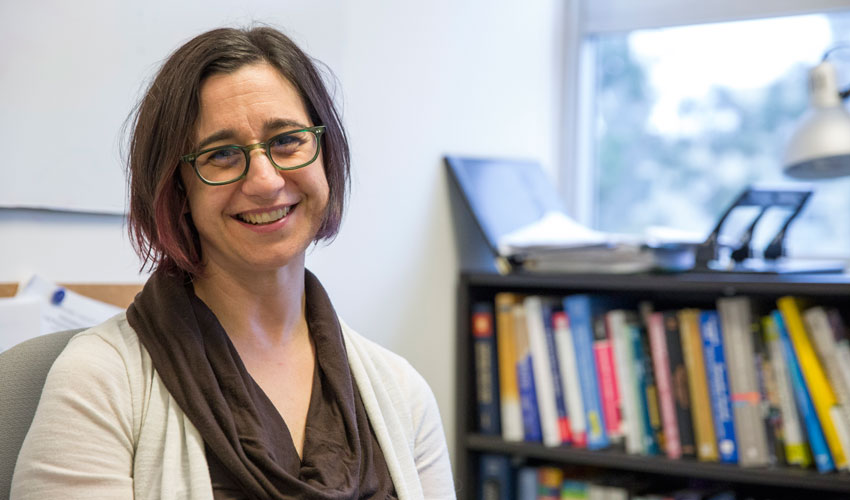For low-income children, relationship with parent key to health

A new study from SF State Assistant Professor of Psychology Melissa Hagan suggests that a more positive parent-child relationship as well as the child’s own ability to manage his or her response to stressful situations may help prevent negative health impacts associated with low socioeconomic status.
SF State psychologist identifies ways to mitigate negative impacts of low socioeconomic status
Educators, health care providers and researchers have known for some time that low socioeconomic status is connected to poor health, including in children, but a new study led by a San Francisco State University psychologist has shed light on what can be done to protect young people from negative outcomes.
The keys? A more positive parent-child relationship as well as the child’s own ability to manage his or her response to stressful situations, according to research published last month in the journal Psychosomatic Medicine.
“In pediatricians’ offices or in school nurses’ offices, people often talk about what things in the environment can mitigate negative physical health impacts, and here we find that there are actually aspects of parenting that can be protective,” said Melissa Hagan, a San Francisco State University assistant professor of psychology and lead author of the study.
The results have implications not just for parents but for health-care providers and educators, who often play key roles in the well-being of young children.
Hagan and her colleagues surveyed the general health of 338 kindergarteners from diverse backgrounds throughout the San Francisco Bay Area at both the beginning and end of the school year. They found that those from low socioeconomic households generally had poorer health in the spring than classmates from higher-income households.
Discovering that it took less than a year for such health disparities to manifest was dramatic in itself, but the research also provided some clues as to how they could be avoided. The researchers also asked parents to describe their relationship with their child, and found that the absence of a “negative” parent-child relationship — for example, the parent describing the child as disappointing or reporting a lot of conflict with their child — helped reduce negative health outcomes in children from low socioeconomic backgrounds.
They also tested how well the children managed their emotional and physiological response to stressful situations, and found that those better able to self-regulate their responses were also protected from health impacts. That ability could be connected to the parent-child relationship, but Hagan cautioned that the study looked at each factor individually and that just one of the two factors was enough to make a difference.
“Children see the world through the eyes of their parents, so the way that children interpret things and deal with things is that they look to their parents to make sense of the world,” Hagan said. “Parents who are able to make sense of the world in a sufficient way are going to do a lot to help their children in terms of physical and mental health.”
For health-care professionals, Hagan said, the research suggests that, in addition to the usual typical checkup, pediatricians should also ask parents how they are feeling about their relationship with their child and educate them on ways they can help their child better respond to stress.
“It’s important to help parents make the child’s environment as predictable and consistent as possible, since increased structure can go a long way toward helping children regulate themselves,” she said. “That said, you do not want so much structure that they’re not exposed to anything, because it’s through being exposed to some level of moderate stress that we learn to deal with it.”
Hagan and her fellow researchers are now looking at how the health of a low socioeconomic household can be impacted by the surrounding neighborhood, taking into account factors such as the availability of parks and health-care facilities or the number of home foreclosures.
“Socioeconomic adversity, negativity in the parent child-relationship, and physiological reactivity: An examination of pathways and interactive processes affecting young children's physical health,” by Melissa J. Hagan, Danielle S. Roubinov, Nancy E. Adler, William Thomas Boyce, and Nicole R. Bush was published in the November/December edition of the journal Psychosomatic Medicine.